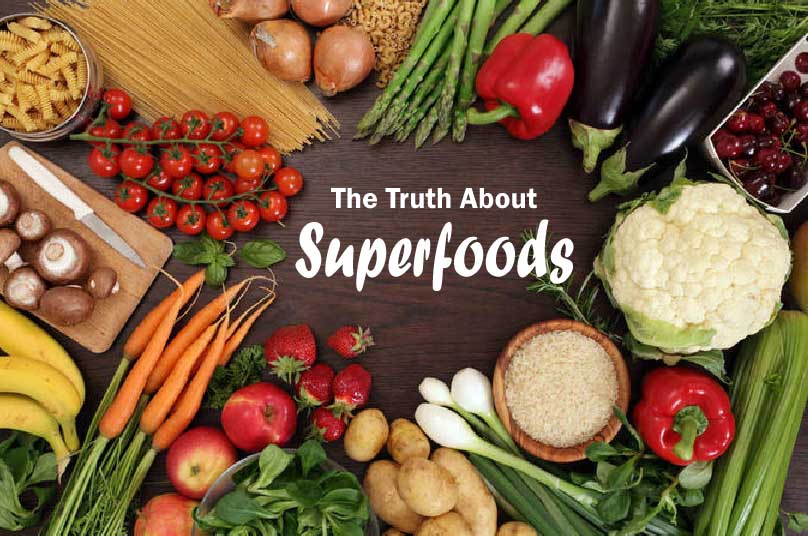Can exotic foods from places with less disease and obesity make Americans healthy and thin too?
You can hardly push a shopping cart through a supermarket these days without bumping into so-called superfoods — exotic edibles like acai, goji berries, and chia seeds that are purportedly packed with health-boosting nutrients. Step over to the health-and-wellness aisle, and you’ll find many superfoods in supplement form, promising all that lifesaving goodness in a single, easy-to-pop pill.
If you’re tempted to buy, you have good reason. The term superfood has colonized both mainstream and natural-food stores, even though the word has no scientific or FDA-approved meaning, says Dr. Frank Sacks of the Harvard School of Public Health. “It’s just a term somebody dreamed up. The trendy term used to be nutraceutical. Now it’s superfood, and the public needs to be very, very skeptical.” Today’s leading experts use the term to refer only to such everyday natural foods as salmon, broccoli, and blueberries, whose health benefits are supported by reams of research.
But where does that leave the latest crop of foreign-sounding edibles — acai, goji, maca, maqui, chia, and more — that barely existed in the market 10 years ago and are now hailed as superfoods? “The way these things work,” says Christopher Gardner, a nutrition researcher at Stanford University School of Medicine, “is that you find some superhealthy population, you ask what they eat, you discover that they eat something others don’t, and then you get a biochemist to look at it.” The biochemist then identifies a new antioxidant compound in the food, and you — if you’re a savvy manufacturer — start cranking out a line of juices, smoothies, or cereals that contain the “superfood.” You claim your product has incredible health benefits and credit it to one or more of three top-selling buzzwords: antioxidants, omega-3, and nutrient density.
–
Buzzword #1: Antioxidants
Antioxidants are produced by plants to mend cell damage caused by photosynthesis. When combined with cancer cells in test tubes, antioxidants inhibit the growth of malignant cells and limit oxidative damage, which contributes to aging and disease. While lab results have been promising, human studies haven’t been as auspicious, in part because some antioxidants break down in our digestive tract, preventing the compounds from even entering our bloodstream. What’s more, large-population studies of people taking antioxidant supplements show that the pill form has no benefit and may even increase the risk of cancer.
Why do manufacturers continue to bottle and sell antioxidants if there’s no definitive proof that they improve human health? For that answer, one need look only to the supplement and fortified-food industries, both worth billions of dollars. While there’s no big monetary payoff in reminding people to eat broccoli, manufacturers can make hefty profits selling a pricey pill or drink that promises easy-to-swallow optimal health.
“The main thing to keep in mind is that all plant foods — all plants — contain antioxidants,” says Michael Pollan, best-selling author of In Defense of Food. “Do some fruits or vegetables have more than others? Probably. But is that significant? Do they survive in the body? No one knows. The best bet is to consume a wide variety of plant foods. To put all your chips on one berry” — or all your berries on one chia chip — “is probably not smart.”
–
Buzzword #2: Omega-3 Fatty Acids
Omega-3s have far more conclusive health benefits than antioxidants do. These fatty acids, found in fish as EPA and DHA and in plants as alpha-linolenic acid, or ALA, are essential to human health: We can’t live without them, and our bodies can’t make them. Research shows that omega-3s from marine life may help prevent cardiovascular and cognitive diseases, but there’s less evidence for health benefits from ALA — the selling point of chia, hemp, and flaxseeds — partly because fewer studies have been done.
“We don’t have the best-quality clinical trials for ALA, but we do have a big scientific database of population studies showing that people eating higher levels of ALA have a lower incidence of heart attacks,” says Sacks. In other words, there’s a good reason to consider ALA beneficial, but Sacks cautions that no one knows how much of the fatty acids are optimal or even if more ALA is always better. “It could be a deficiency thing, that if you have a very low amount, you’re at a higher risk of disease,” he says. “At least, that’s the working hypothesis.”
As for chia, the seeds have the highest ALA concentration of any plant food, but walnuts are also rich in the compound. However, chia does have one unique effect not found in other foods with ALA: Once consumed, the seeds produce a viscous gel in the stomach that may trigger fullness and satiety. Studies, though, have yet to conclude that this in turn leads to weight loss.
–
Buzzword #3: Nutrient Density
Nutrient density measures the concentration of vitamins, minerals, antioxidants, and other compounds in a food relative to its total calorie count. Eating nutrient-dense foods like acai and pomegranates certainly beats a diet of such nutrient-void foods as white bread and candy, but since most fruits and vegetables are nutrient dense, you can find many of the vitamins, minerals, and antioxidants in, say, goji berries, in more common foods like oranges and carrots.
None of this means that exotic superfoods aren’t healthy additions to a balanced diet. What it does suggest, however, is that scientists aren’t sure how antioxidants, omega-3s, and other specific nutrients affect our overall health — a statement that also applies to more traditional superfoods like salmon, blueberries, walnuts, kale, and Greek yogurt. What we do know is that the more processed a food is, regardless of whether it’s called a superfood or not, the less healthy it is. So no matter what you choose to consume, be sure to eat it in as close to its natural form as possible.




